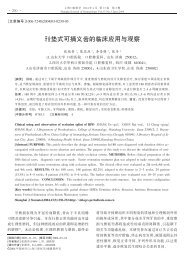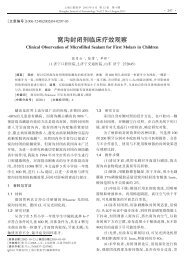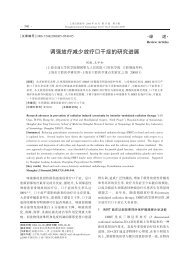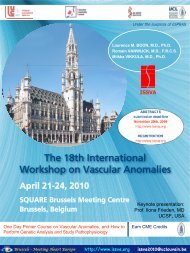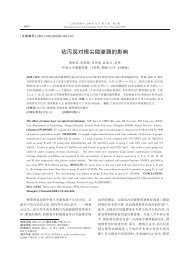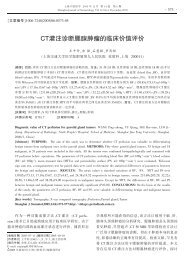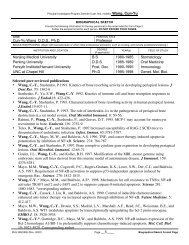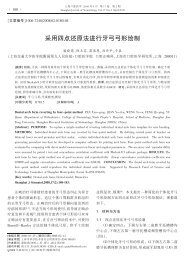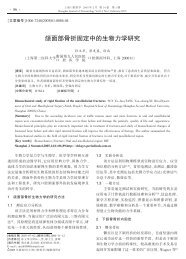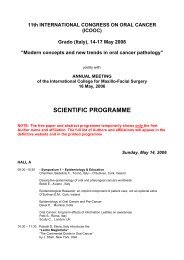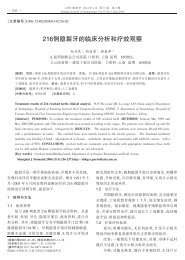core curriculum cleft lip/palate craniofacial anomalies
core curriculum cleft lip/palate craniofacial anomalies
core curriculum cleft lip/palate craniofacial anomalies
Create successful ePaper yourself
Turn your PDF publications into a flip-book with our unique Google optimized e-Paper software.
Core Curriculum for Cleft Palate and other Craniofacial Anomalies<br />
a. Neurocranium: membranous (desmocranium) and cartilaginous<br />
(chondrocranium).<br />
b. Viscerocranium, e.g. maxilla, <strong>palate</strong>, mandible.<br />
c. Morphogenesis of sutures and synchondroses.<br />
2. Development of the face, eye, nose, <strong>lip</strong>, <strong>palate</strong>, tongue, ear<br />
a. Facial prominences (5).<br />
b. Roles of olfactory, optic and otic placodes.<br />
c. Primary and secondary <strong>palate</strong>s.<br />
d. Pharyngeal arch contributions to tongue formation.<br />
e. Morphogenesis of the ear – internal, middle, and external ears.<br />
f. Morphogenesis of the eye<br />
1) Optic cup and lens<br />
2) Retina, lens, iris and ciliary body<br />
3) Choroid, sclera and cornea<br />
4) Optic nerve<br />
g. Organization and development of orofacial and tongue muscles.<br />
h. Morphogenesis of velopharyngeal muscles.<br />
3. Pharyngeal arches and pouches<br />
a. Organization of arches and pouches.<br />
b. Component tissues of arches and pouches.<br />
c. Structures developing from arches and pouches.<br />
d. Malformations related to abnormal pharyngeal arch and pouch<br />
formation, e.g., branchial fistulae and cysts.<br />
4. Development of teeth<br />
a. Stages in typical tooth morphogenesis.<br />
b. Tissue interactions in tooth development.<br />
c. Development and plan of primary, mixed, and permanent teeth.<br />
C. Basic definitions in <strong>craniofacial</strong> biology<br />
1. Anomaly (Major): Condition often defined as malformations (or defects) that<br />
create significant medical problems and require surgical and medical<br />
management.<br />
2. Anomaly (Minor): Condition often described as morphologic features that<br />
vary from those that are most commonly seen in the normal population but,<br />
in and of themselves, are not associated with increased morbidity.<br />
3. Association: A group of <strong>anomalies</strong> that occur more frequently together than<br />
would be expected by chance alone but do not have a predictable pattern or<br />
unified etiology.<br />
4. Critical Periods: Intrauterine (chiefly embryonic) periods of peak<br />
organogenesis during which time the embryo is at high risk for teratogen<br />
exposure.<br />
5. Disruptions: A condition where a fetal structure is growing normally and<br />
then growth is arrested by a factor(s) that disrupts the normal development<br />
process.<br />
10<br />
© 2004 American Cleft Palate-Craniofacial Association



